This is one in a series of posts on the Fujifilm GFX 100S. You should be able to find all the posts about that camera in the Category List on the right sidebar, below the Articles widget. There’s a drop-down menu there that you can use to get to all the posts in this series; just look for “GFX 100S”. Since it’s more about the lenses than the camera, I’m also tagging it with the other Fuji GFX tags.
In ten posts, I tested the off axis performance of the Fujifilm 110 mm f/2, 80 mm f/1.7 , 250 mm f/4, 63 mm f/2.8, 45 mm f/2.8, 50mm f/3.5, 30mm f/3.5, 23mm f/4, and 120 mm f/4 macro GF lenses on a GFX 100S. In the last post I compared the performance of the 23, 30, 45, 50, and 63 mm primes. Now I’m moving on to the zooms, starting with today’s subject, the Fuji 32-64 mm f/4 GF zoom.
Here’s the test protocol:
- RRS carbon fiber legs
- C1 head
- 32, 44, and 64 mm focal length
- Target distance as per the table below
- ISO 100
- Electronic shutter
- 10-second self timer
- f/4 through f/11 in whole-stop steps
- Exposure time set by camera in A mode
- Focus bracketing, step size 1, 120 to 60 exposures
- Initial focus well short of target
- Convert RAF to DNG using Adobe DNG Converter
- Extract raw mosaics with dcraw
- Extract slanted edge for each raw plane in a Matlab program the Jack Hogan originally wrote, and that I’ve been modifying for years.
- Analyze the slanted edges and produce MTF curves using MTF Mapper (great program; thanks, Frans)
- Fit curves to the MTF Mapper MTF50 values in Matlab
- Correct for systematic GFX focus bracketing inconsistencies
- Analyze and graph in Matlab
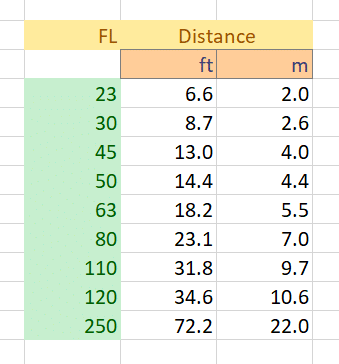
MTF50 results for the three focal lengths tested:
One of the striking things is how, at the two shorter focal lengths and at wider apertures, the edge orientation of the off-axis tests makes such a big difference in the results. This is not due to field curvature or the focus plane effects of astigmatism, since the test method calibrates that out.
How the zoom compares to the three GF primes closest to the tested focal length:
Especially at 32 and 44 mm and the wider apertures, the primes are much better off axis.
Looking at microcontrast:
Now microcontrast as compared to the primes:
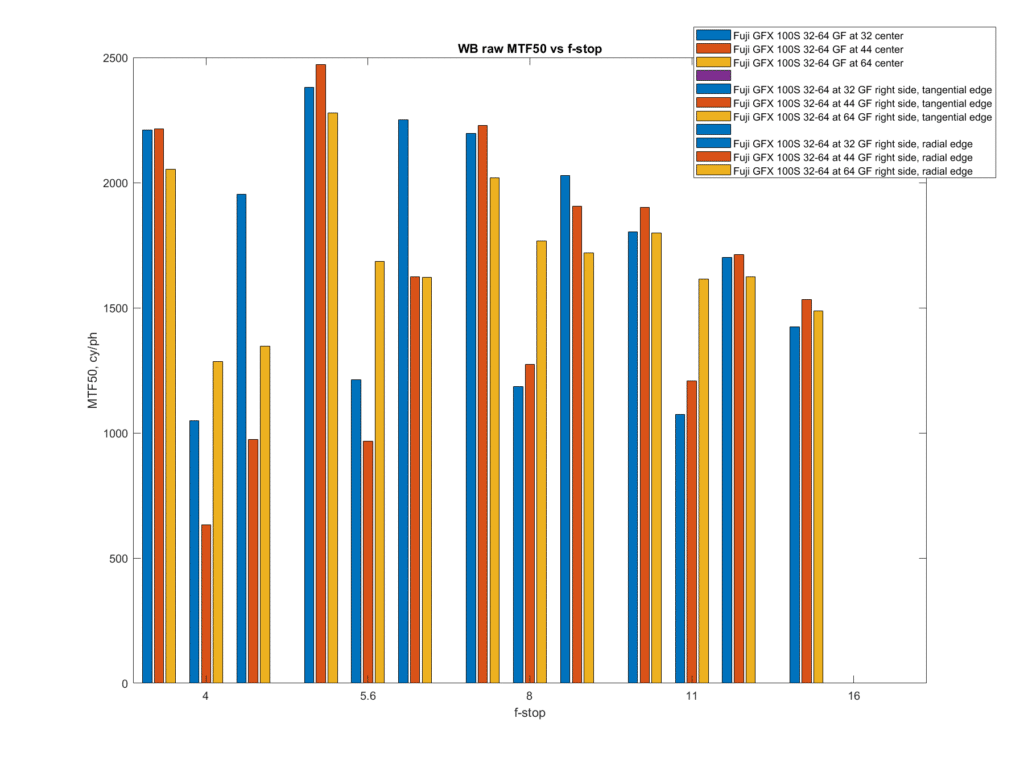
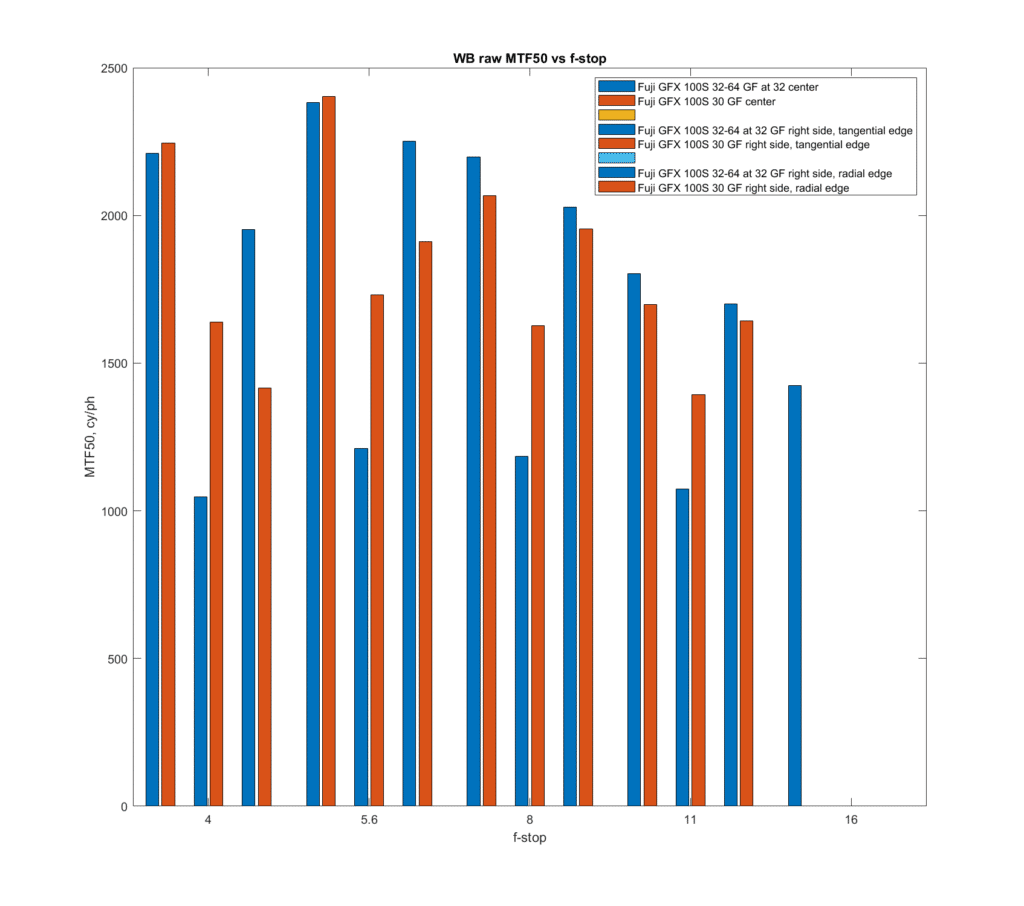
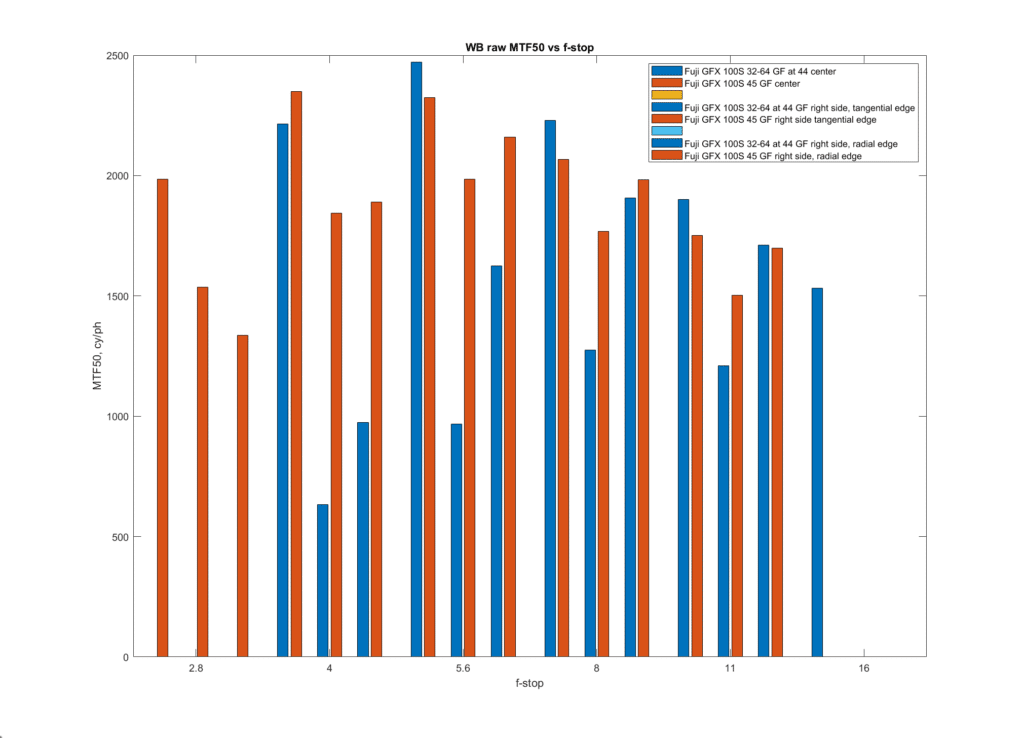
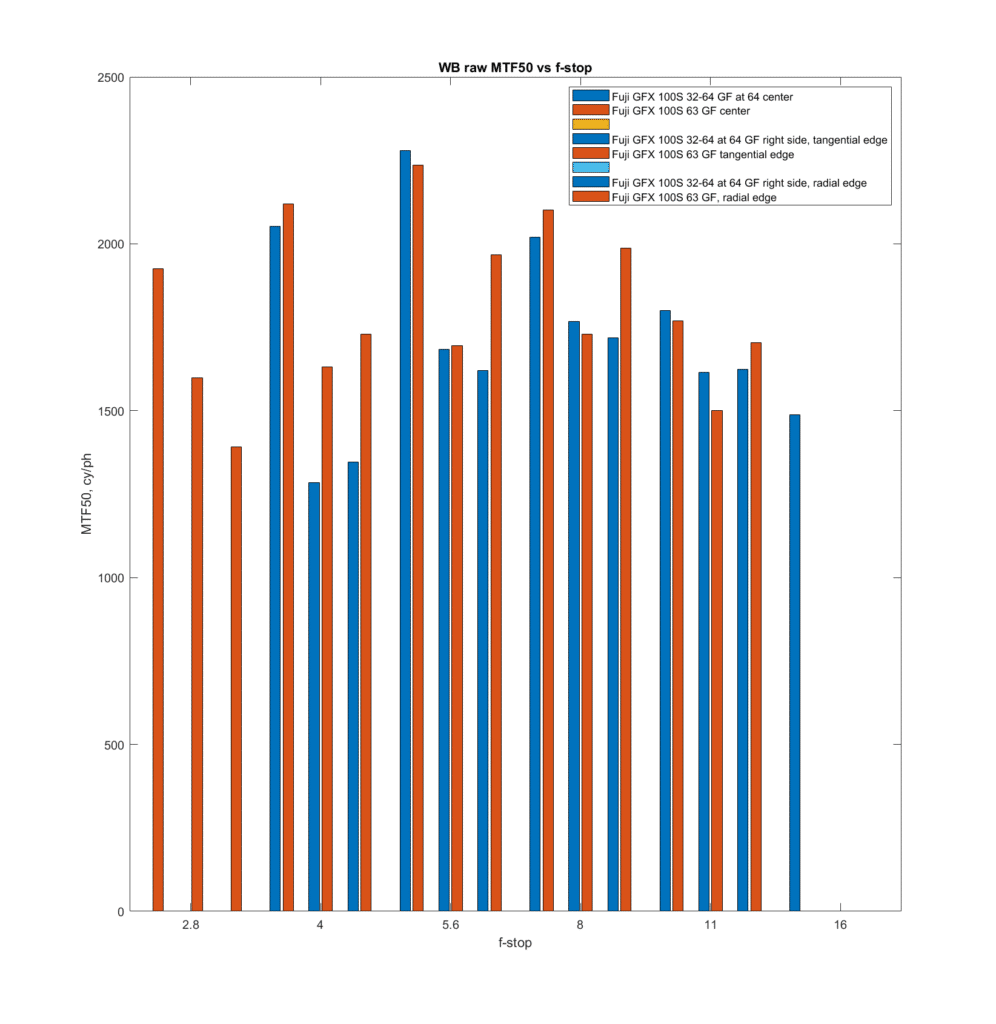
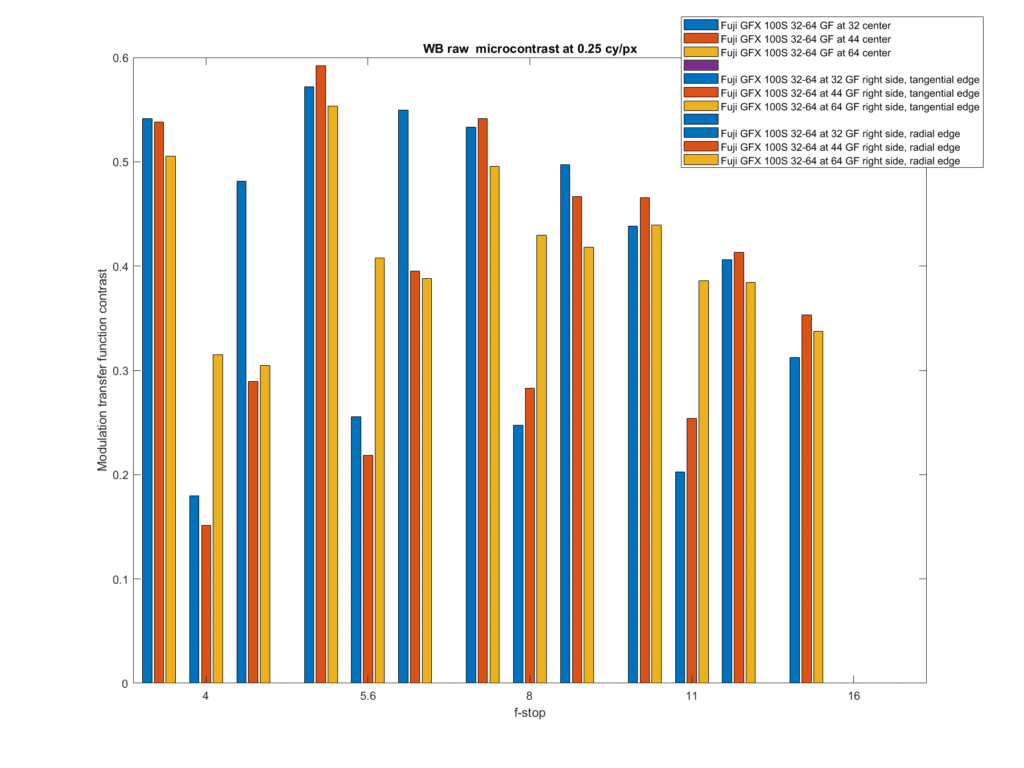
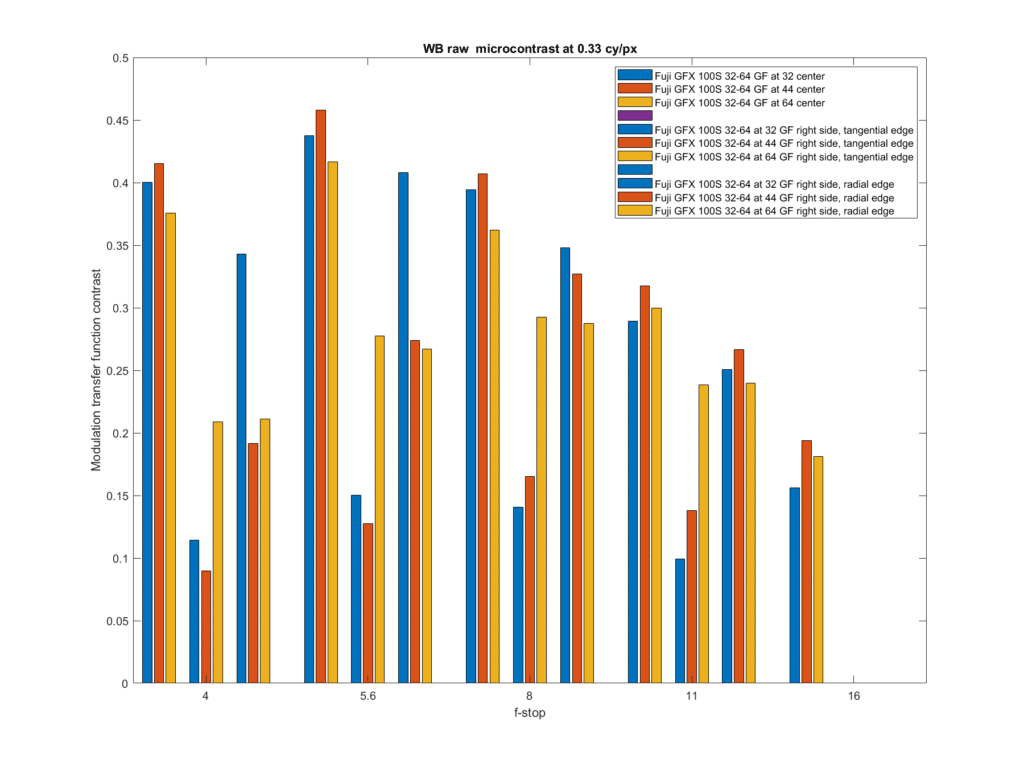
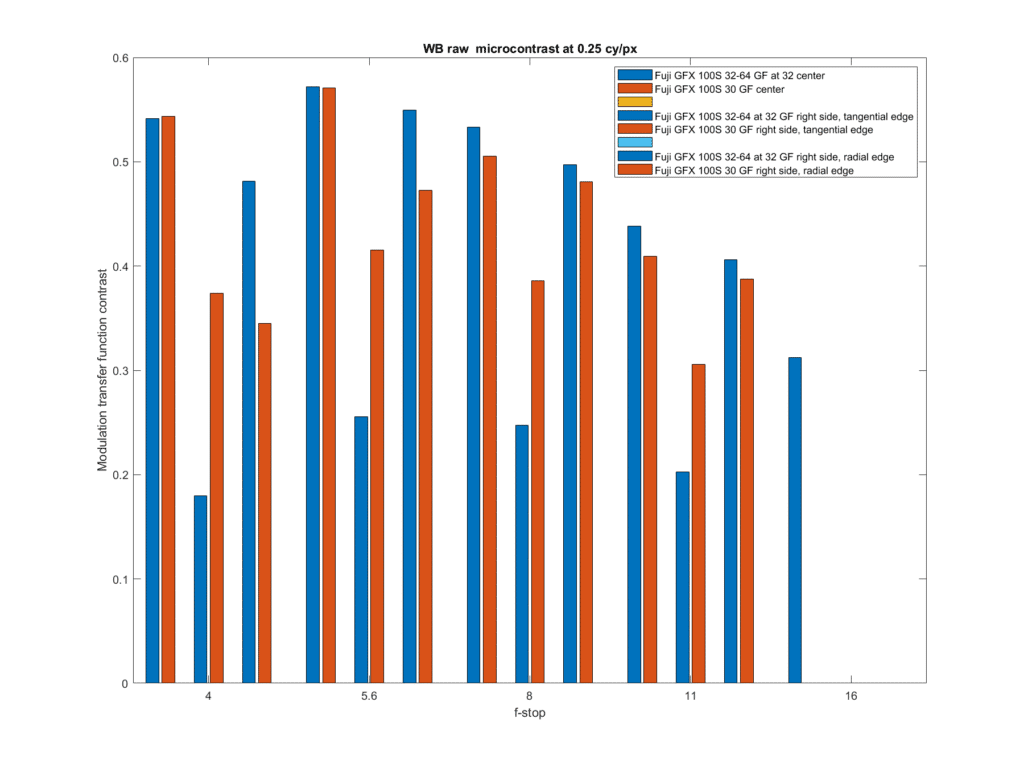
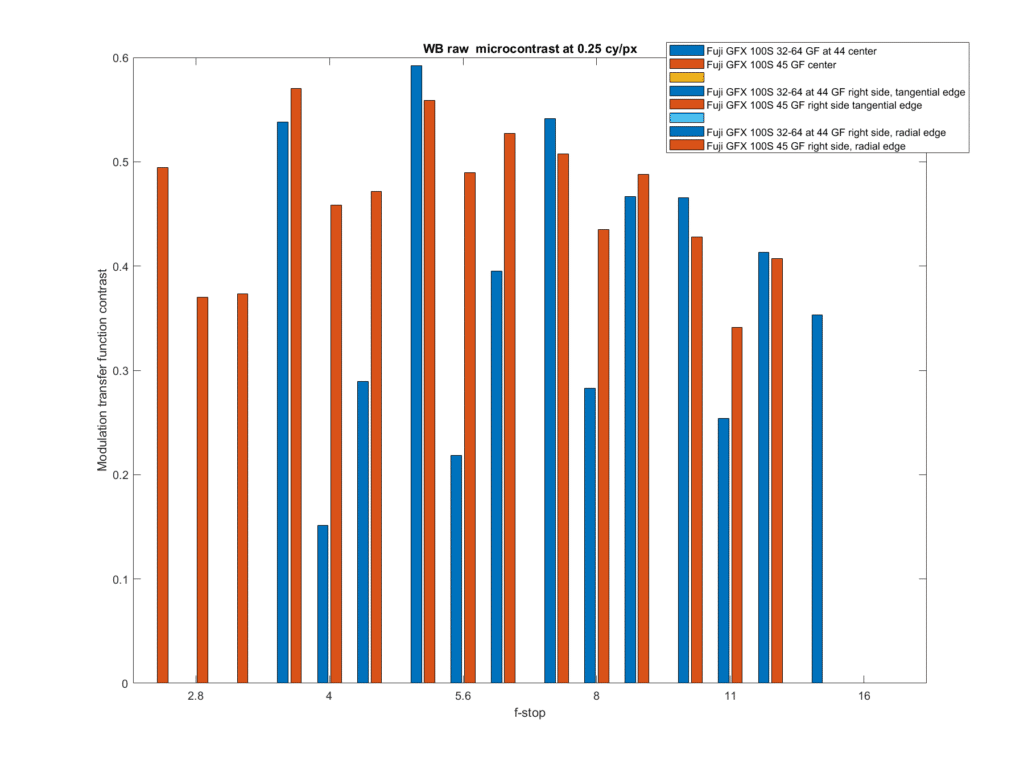
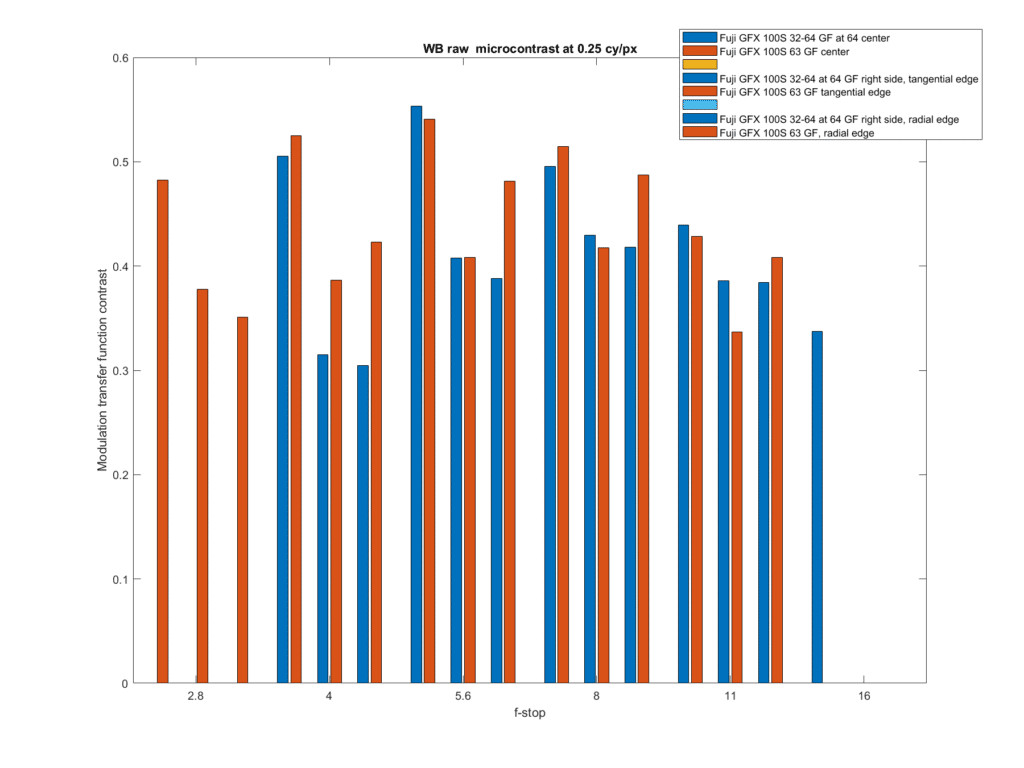
Mike D says
I love looking at your charts even though I have no idea what they mean. I’m new to the Fuji GF line and have the 100s, a 32-64, and a 110. I just got the 110 back from Fuji who adjusted the focus, and it is way sharper and has a lot more contrast than the 32-64. I’m thinking of getting a 23 prime or else the 20-35 zoom, but after seeing the difference in the 32-64 and the 110, I’m leaning towards selling the 32-64 and going all primes. I just sent the 32-64 to Fuji to check the focus, so I’ll wait till it comes back and compare it to the 110 again before I make that leap. So, for the novice, could you rate the GF lenses in what you think is best to worst based on your testing?
JimK says
The bet lens for you depends on what you want to do with it. That said, I think the 20-35 is probably a better choice for most people than the 23. If you want a prime in the middle of the 32-64 range, the 45 GF is a fine lens.